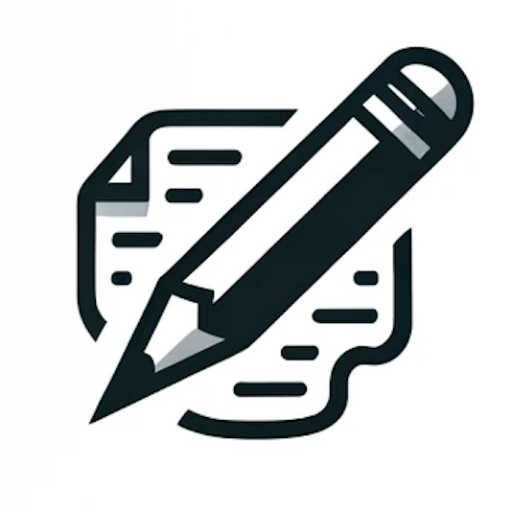Grammar-AI grammar correction tool
AI-Powered Precision for Medical Writing
Can you check the grammar in my medical research paper?
How can I improve this medical case report?
I need help with grammar in my thesis on healthcare.
Is this medical article grammatically correct?
Related Tools
Load More
Grammar Guardian
Grammar corrections for non-natives.

Grammar Checker
A superfast, GPT-based grammar checker that corrects your spelling and grammar without altering your original text.

Correct the Grammer - GC Prestige
I correct grammatical errors in texts.

Grammar Guide
A writing assistant focused on grammar, style, and clarity.

Fix Grammar Only
I specialize in correcting grammatical errors in text. No additions, no alterations, no meaning or style changes of the original text, but simply fixing any grammatical errors.
Grammarizer
Corrects grammar and translates non-English sentences
20.0 / 5 (200 votes)
Introduction to Grammar
Grammar is an advanced tool designed to enhance the clarity, accuracy, and professionalism of academic medical writing. It leverages sophisticated algorithms and linguistic rules to correct grammatical errors, ensure consistency in tone, and improve the overall readability of texts. Grammar focuses on maintaining a formal and academic tone, making it an invaluable asset for researchers, clinicians, and students in the medical field. For instance, when a user inputs a sentence with complex medical terminology and nuanced information, Grammar refines the sentence structure without altering the intended meaning, ensuring that the text adheres to high academic standards.

Main Functions of Grammar
Error Correction
Example
Original: 'The study were conducted over a period of two year.' Corrected: 'The study was conducted over a period of two years.'
Scenario
In academic papers, precise language is crucial. Grammar identifies and corrects errors in subject-verb agreement, tense consistency, and pluralization, ensuring the text is error-free.
Clarity Enhancement
Example
Original: 'Given the fact that there are multiple variables to consider, the analysis is complex.' Corrected: 'Considering multiple variables, the analysis is complex.'
Scenario
Medical writing often involves intricate details. Grammar simplifies convoluted sentences to enhance readability without losing the complexity of the subject matter.
Formal Tone Maintenance
Example
Original: 'The patient's heart rate was all over the place during the surgery.' Corrected: 'The patient's heart rate fluctuated significantly during the surgery.'
Scenario
Maintaining a formal tone is essential in medical documentation. Grammar adjusts colloquial language to a formal style, ensuring professionalism in communication.
Ideal Users of Grammar
Researchers and Academics
Researchers and academics benefit from Grammar by ensuring their manuscripts, grant applications, and publications are grammatically accurate and professionally presented. This enhances their credibility and increases the likelihood of their work being accepted by prestigious journals.
Medical Students and Clinicians
Medical students and clinicians use Grammar to refine their case reports, research papers, and clinical notes. By providing clear and error-free documentation, they can communicate more effectively with peers, educators, and patients, which is crucial in a clinical setting.

How to Use Grammar
1
Visit aichatonline.org for a free trial without login, also no need for ChatGPT Plus.
2
Upload or input your text into the Grammar tool.
3
Select the type of corrections or enhancements you need (e.g., grammar, style, academic tone).
4
Review the suggestions and corrections provided by Grammar.
5
Incorporate the changes into your document for a polished final version.
Try other advanced and practical GPTs
Grammar & Correctness
AI-powered grammar and clarity checker

Code Commando
AI-powered assistant for system admins

Starter
AI-powered tool for effortless productivity

HTML CSS JavaScript Expert
AI-powered web development assistant.

Writer for Professionals
AI-driven writing for professionals

George R. R. Martin Writer
AI-Powered Narrative Guidance Tool

PowerPoint slide creator
Create professional slides effortlessly with AI.

Create a high-quality presentation for PowerPoint
AI-powered tool for stunning presentations

PowerPoint Icons
AI-powered minimalistic icons for PowerPoint

AI SEO For Websites
AI-powered SEO insights for optimized content.

Alan Nicolas IA ♾️
Organize your mind with AI-powered insights.

Phable Data Driven Content Strategist
AI-Powered Data-Driven Content Strategy

- Academic Writing
- Grammar Check
- Research Editing
- Medical Papers
- Style Correction
Grammar Q&A
What is Grammar?
Grammar is an AI-powered tool designed to correct grammatical errors and improve the clarity and academic tone of medical writing.
How can Grammar help with academic writing?
Grammar ensures that academic papers are free from grammatical errors, stylistic inconsistencies, and maintains a formal tone suitable for medical literature.
Do I need a subscription to use Grammar?
No, you can access Grammar for free at aichatonline.org without needing a ChatGPT Plus subscription.
What types of documents can Grammar handle?
Grammar can handle a variety of documents, including research papers, theses, dissertations, and other academic writings in the medical field.
How accurate is Grammar in correcting errors?
Grammar is highly accurate in identifying and correcting grammatical errors, enhancing clarity, and ensuring proper academic tone, leveraging advanced AI technology.